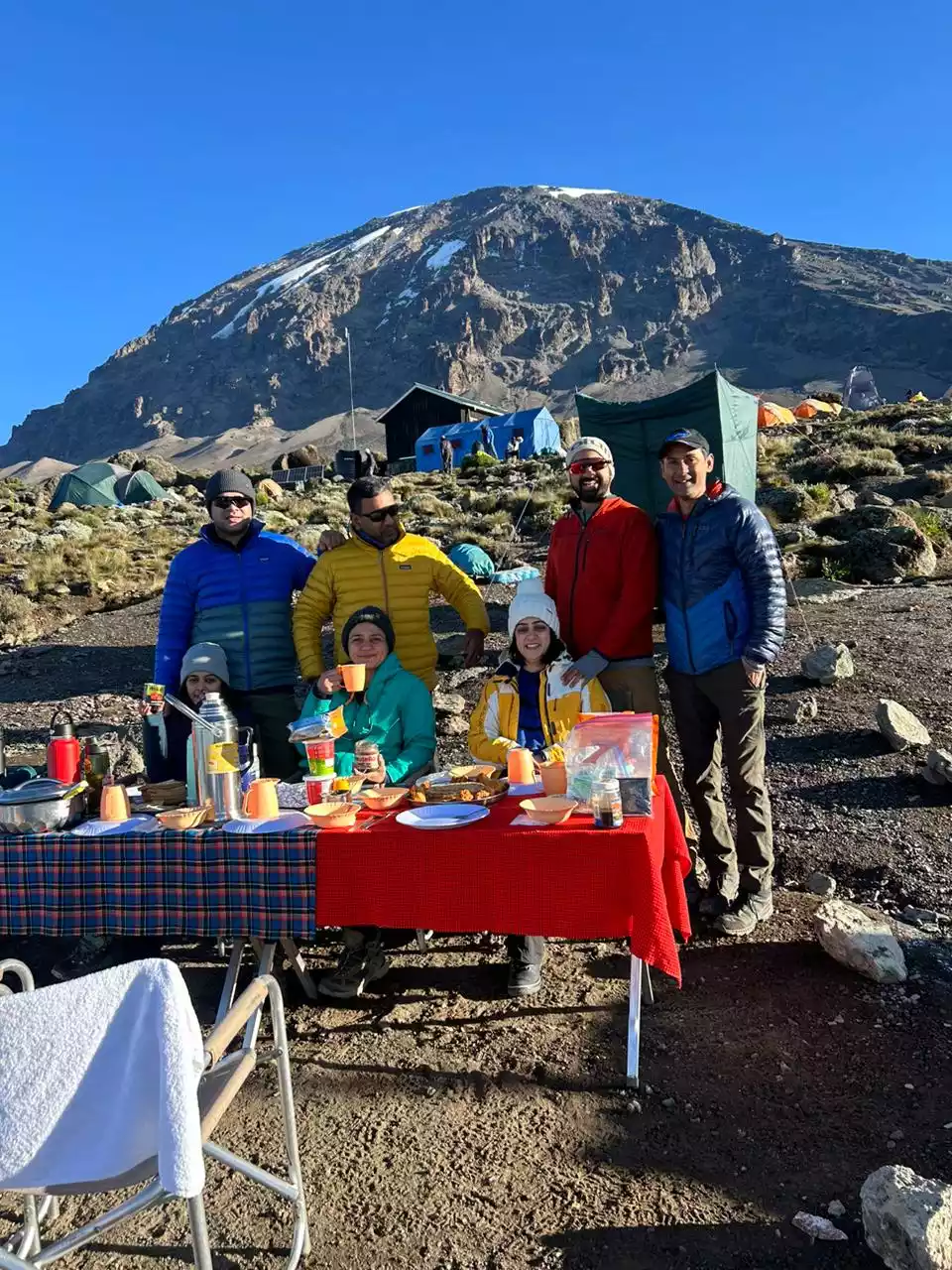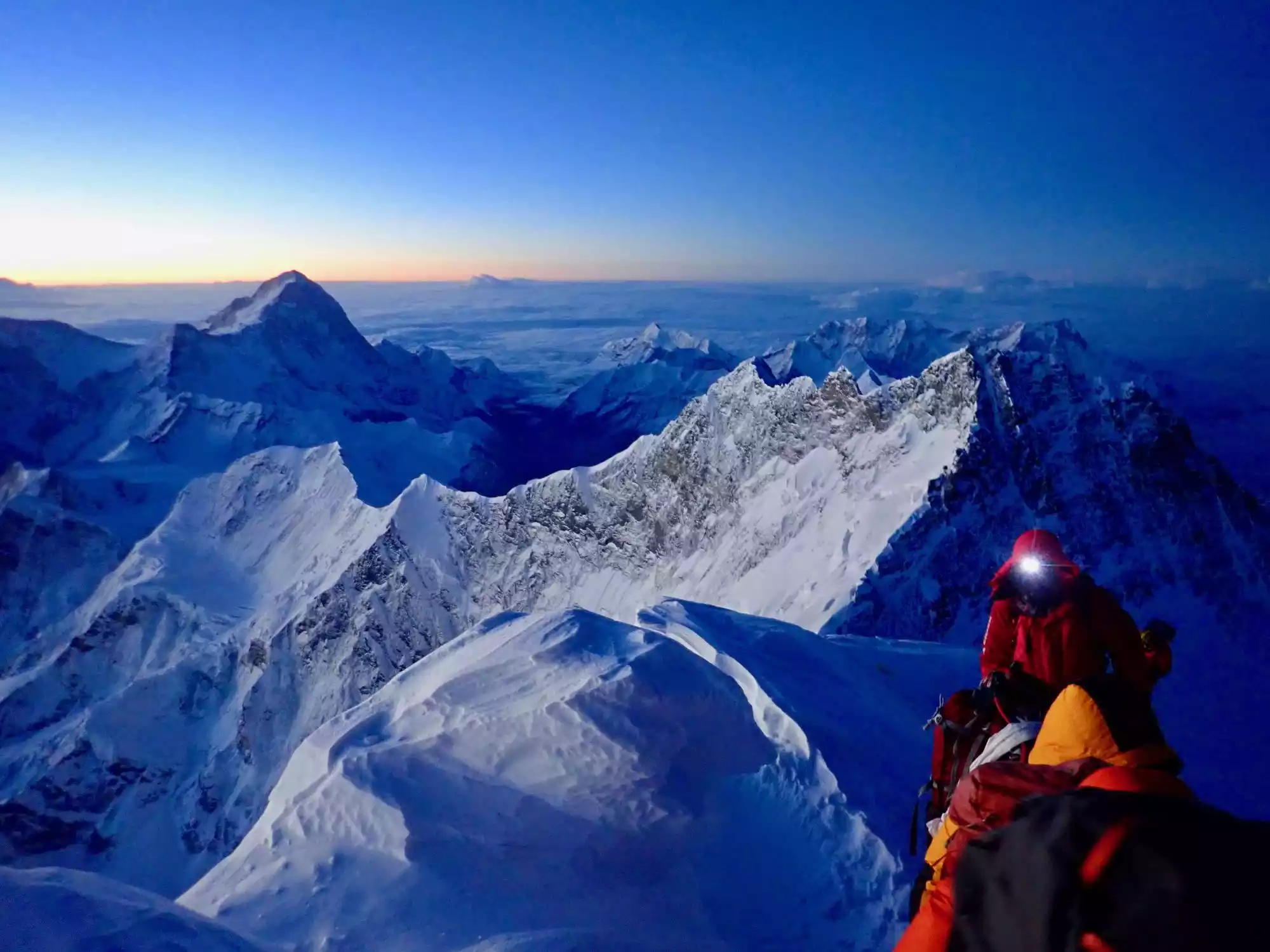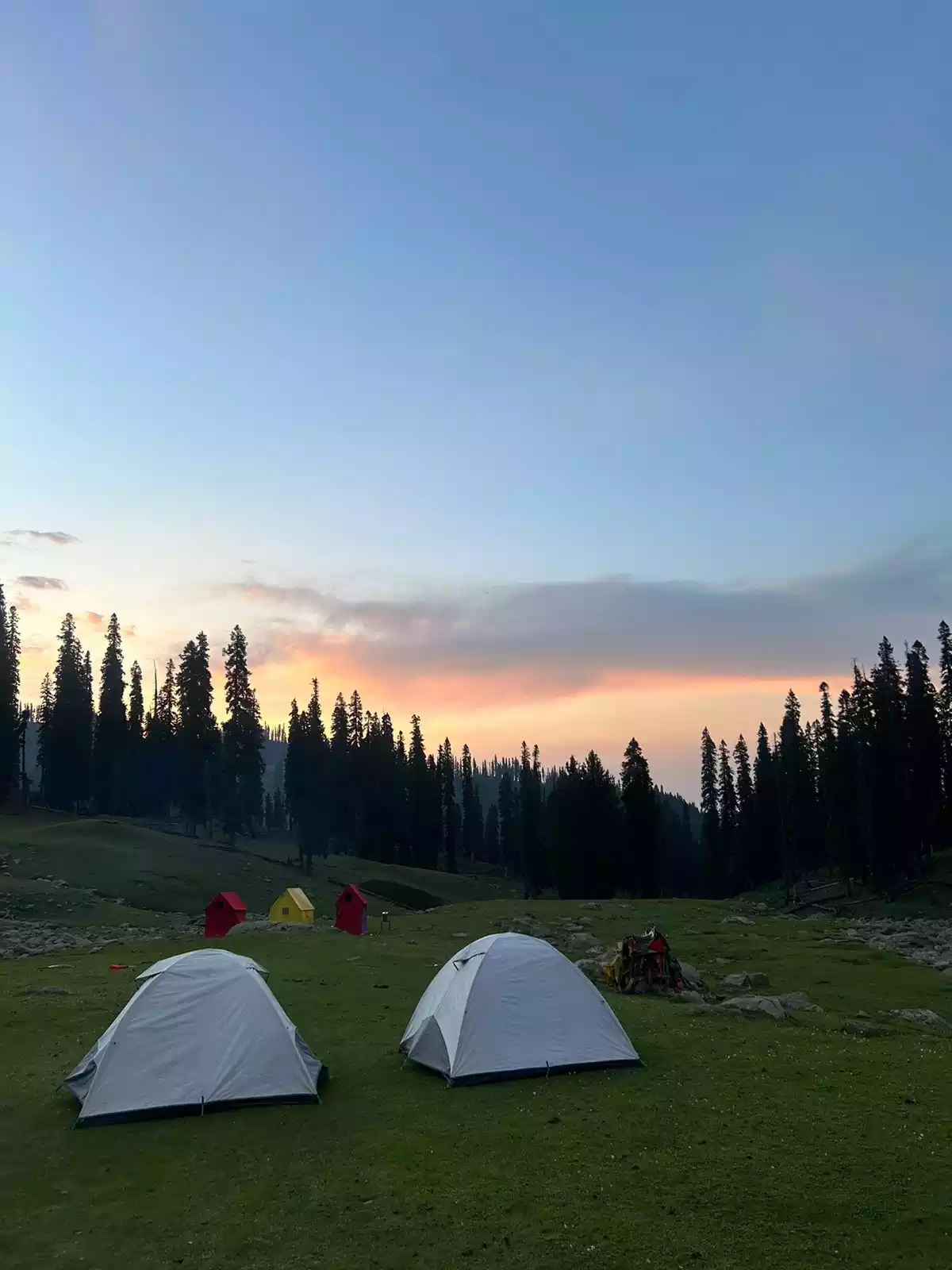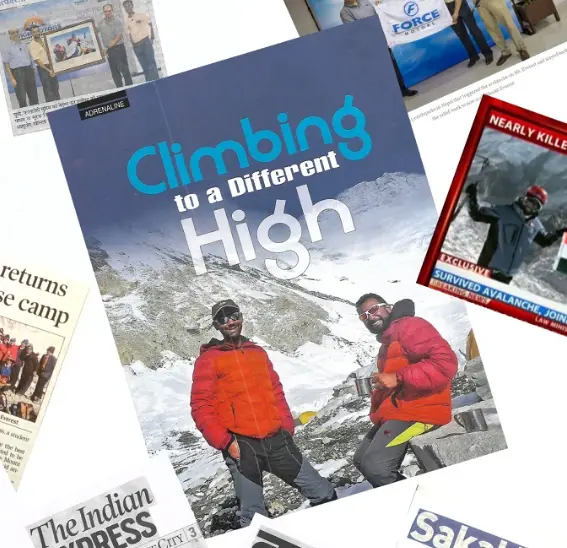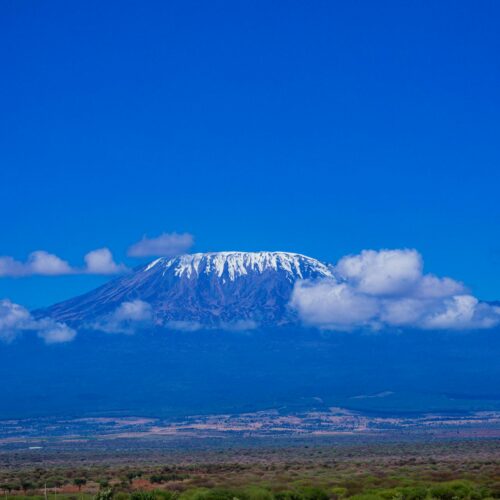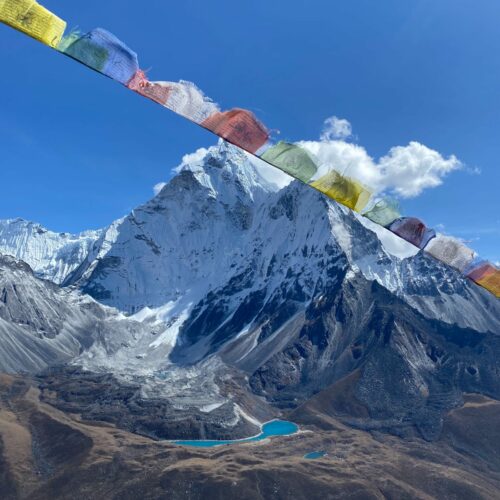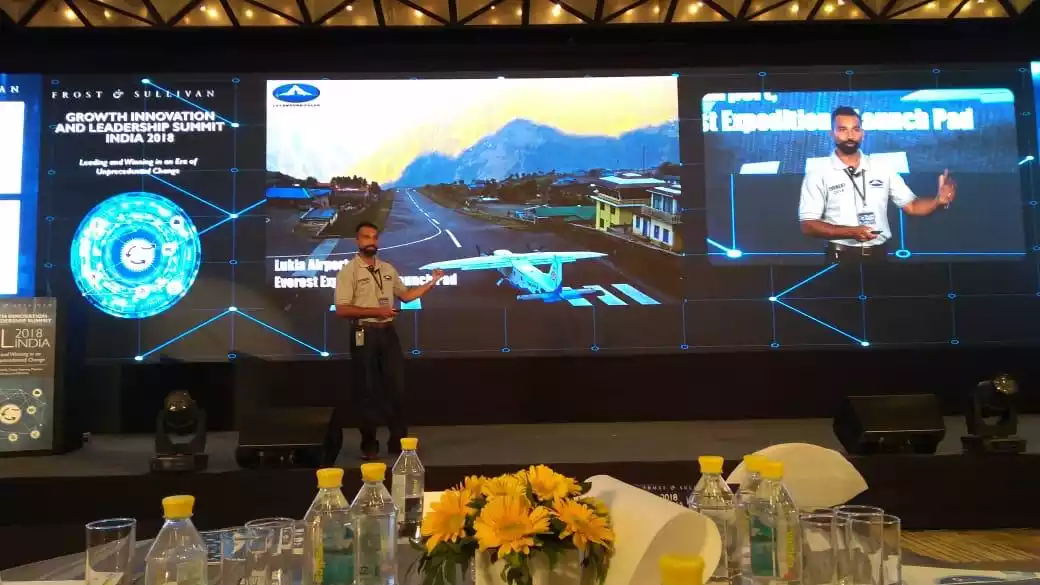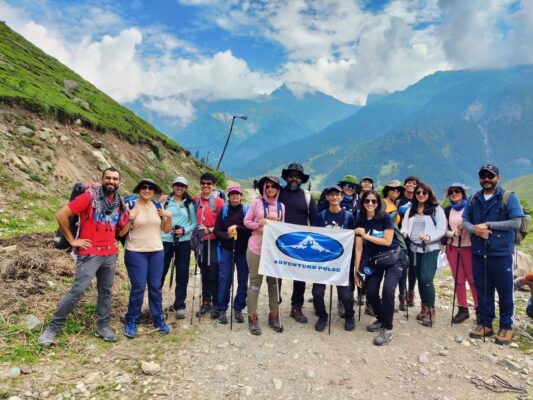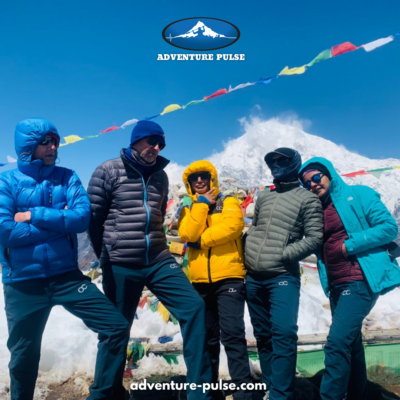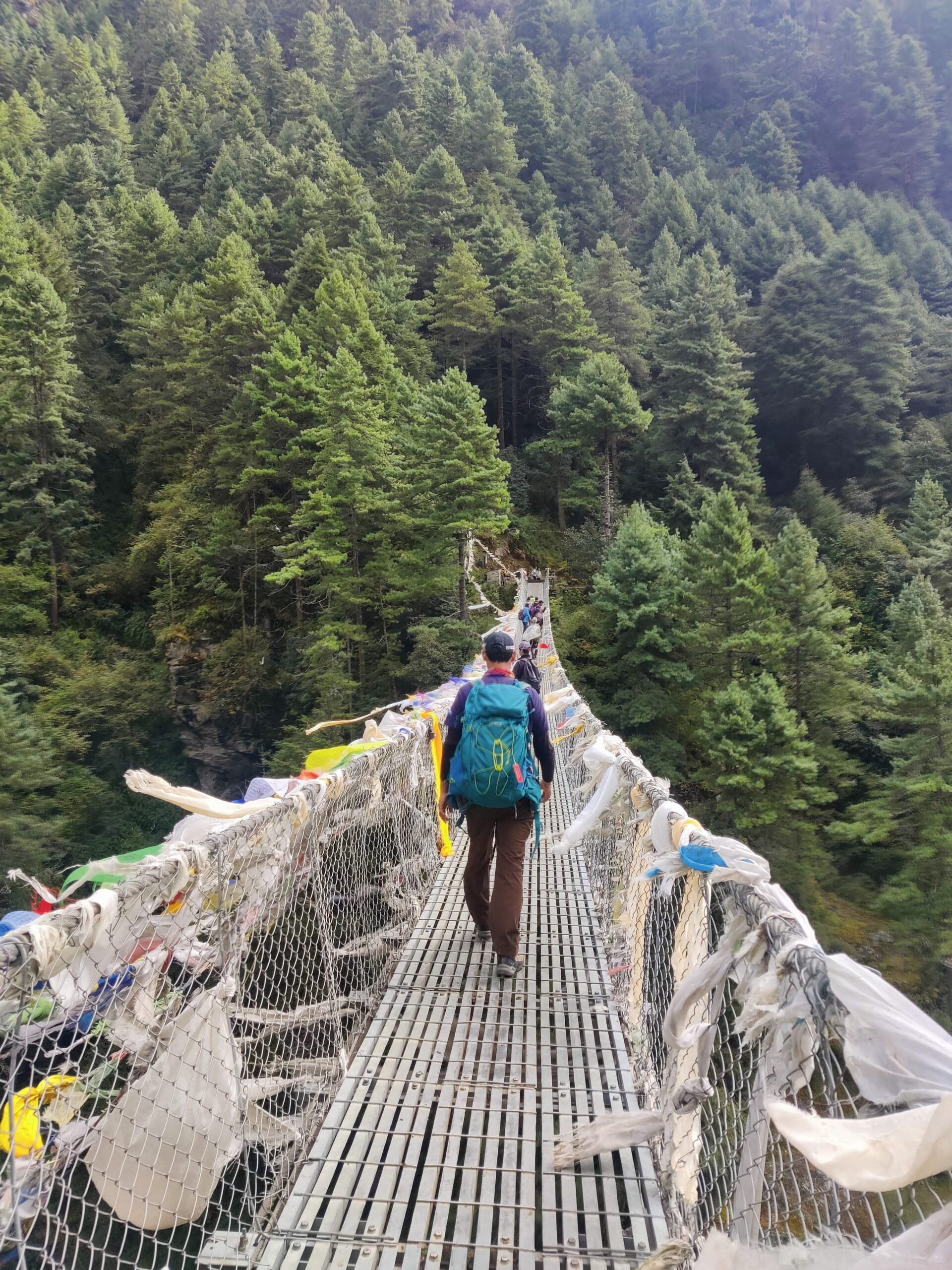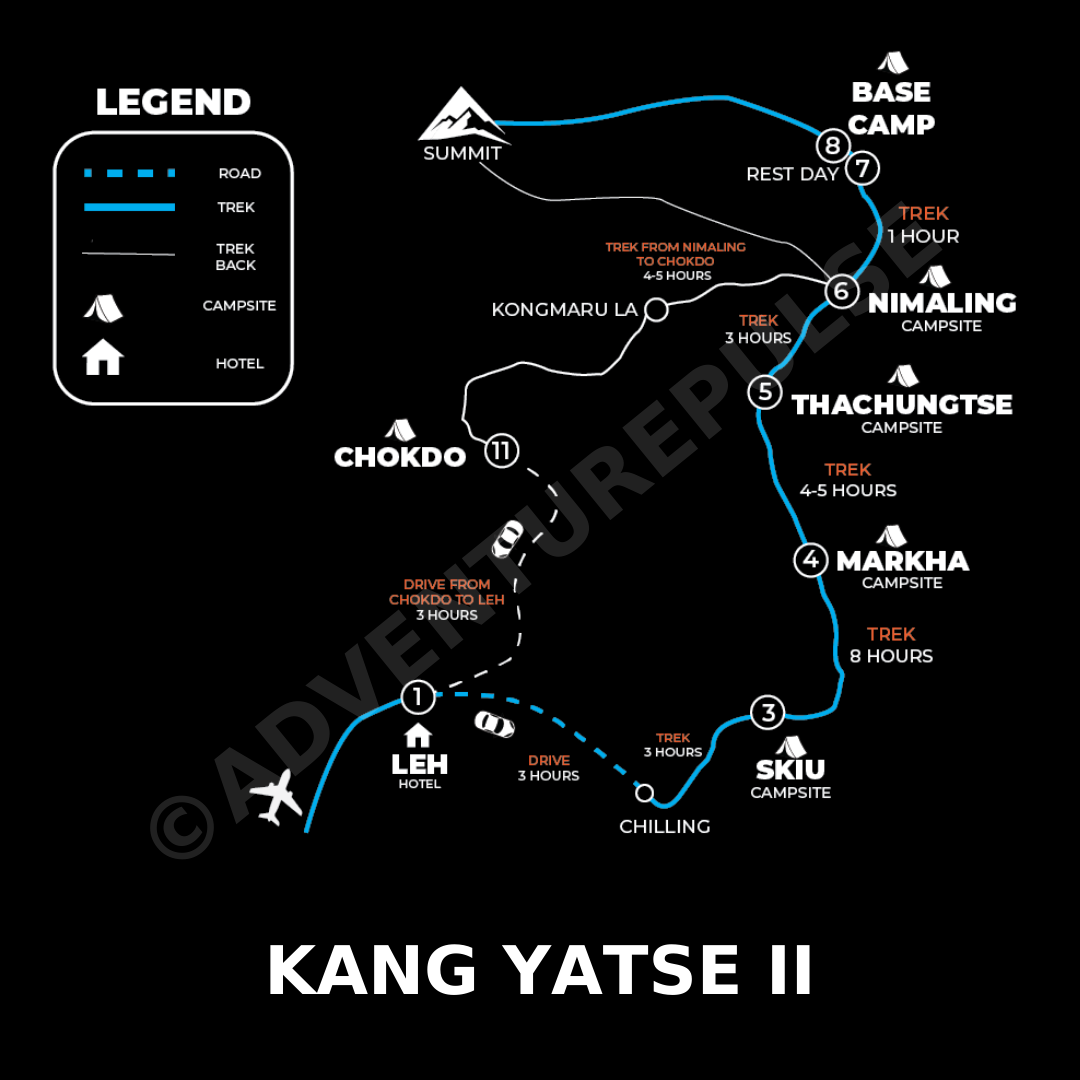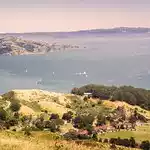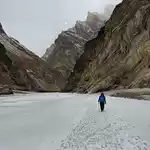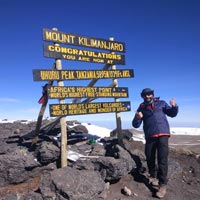Brief Itinerary
- Day 1 - Arrival in Leh
- Day 2 - Rest and Acclimatization.
- Day 3 - Drive from Leh to Chilling and trek to Markha.
- Day 4 - Markha to Thachungtse.
- Day 5 - Thachungtse to Kang Yatse II Base Camp.
- Day 6 - Rest & Acclimatization at Base Camp
- Day 7 - Training at Base Camp - Icecraft & Snowcraft
- Day 8 - Summit Kang Yatse 2 & Return to Base Camp
- Day 9 - Buffer Day in case of bad weather.
- Day 10 - Kang Yatse Base Camp to Chokdo via Kongmaru La & Drive to Leh via Hemis Monastery.
- Day 11 - Fly out from Leh
Inclusions & Exclusions
Trip Cost Includes:
- Assistance upon arrival at Leh airport by our representative.
- Group airport pickup and drop on arrival and departure.
- Transportation to the start point of the trek and from end point to Leh with the group.
- Accommodation in Leh on Bed & Breakfast plan for 03 Nights.
- Tented accommodation during trek in 03 man "A" Shaped tent on twin sharing basis.
- All Meals (Bed Tea, Breakfast, Hot / Pack Lunch, Evening Tea & Dinner) during the course of the trek. (For full board service).
- Porters/Mule caravan to transport rucksack up to 10 kgs limit.
- Currently applicable permit fees and Wildlife fees.
Trip Cost DOES NOT Include:
- Airfare to and from Leh.
- Additional days either on the trek or in Leh other than the standard itinerary.
- Any kind of Personal Equipment or Optional Tours/Extra Meals Ordered.
- Tips, Insurance, Laundry, Phone Calls.
- Any Kind of Drinks (Alcoholic, Mineral, Aerated).
- Personal climbing equipment like climbing shoes, crampons etc. (Can be rented on actuals)
- Guide fee, camera fee, soft or hard drinks, starters.
- Anything not specifically mentioned under the inclusions.
- Single supplement tent or hotel.
- Expenses arising out of early arrival and late departures.
- Expenses arising out of medical evacuation, injuries if any.
Things to carry
Download as PDFExtreme temperature variations, high altitude, snow glare & proximity to the sun are certain factors which necessitate the need for proper trekking gear. In order to enjoy your experience in the mountains, we have recommended that you carry the following with you.
Apparel
- Thermals (Inners) - At least 1 pair Top & Bottom
- 6-8 t-shirts or long-sleeve shirt (cotton / dryfit)
- 2-3 pairs of trekking pants (no jeans/denims)
- 1 Fleece Jacket
- 1 Down Jacket
- 1 Waterproof Layer (Rainjacket/Shell Jacket)
- 1 pair of Hiking Boots
- 1 pair of comfortable sandals/floaters/sneakers
- 6-8 pairs of cotton socks (for day)
- 2 pairs of thick/woollen socks (for night)
- Gloves - liner and outer (ideally waterproof when using in snow)
- Sun hat/cap
- Woollen cap
- Buff or Balaclava
- 1 pair of thick mountaineering socks
- Thick Thermals (1 pair)
- 2 Synthetic Undergarments
Specific Equipment for Climbing (Can be Rented in Leh)
- Climbing Helmet
- Mountaineering Harness
- Mountaineering Boots a.k.a Snow Boots
- Crampons
- 1 Locking + 1 Non-Locking Carabiner
- Thick mountaineering mittens or gloves
Accessories
- Duffel Bag/Rucksack (60L+)
- Daypack/Small Backpack (20-30L capacity)
- Trekking Pole/s
- 2x 1L Bottles (for drinking water)
- Torch or Headlamp + Batteries
- Knee/Ankle/Wrist Guards (if you require)
- Trekking Poles
- Sunblock/Sunscreen
- Ski Goggles/ Cat-4 Sunglasses
- Moisturiser
- Hand Sanitiser
- Personal Medical Kit
- Personal Toiletries Kit
- Trail Mix/Trail Snacks
Fitness
Download as PDF- There are three main aspects of training to focus on – strength training, cardiovascular training, and trekking + trekking alternatives.
- Strength training involves training different muscle groups, so that they can become stronger. There are different exercises for each muscle group, and working them all out 2x-3x a week should be enough to help you get comfortable trekking.
- Legs / lower body - exercises like squats, glute bridges, step ups and leg presses with help you develop stronger muscles in the lower body.
Core - Exercises like planks, bicycle crunches and leg raises can help with core stability; Pilates is also a core-intensive type of workout that will help.
Upper body - Bodyweight exercises like push-ups, pull-ups and dips will help develop these muscles. You can also use resistance bands or light weights to develop them further.
- It’s vital to do plenty of cardio training before your trek, so that you can get the most out of your experience
- Running - This is the most recommended form of cardio activity, as it activates a lot of the same muscles as trekking. Being able to run 10km in 60 minutes will allow you to get the most out of your trek.
Cycling / Swimming - If you have knee issues, or don’t enjoy running, you can also opt for cycling and swimming. Being able to cycling 30-50km or swim for 30-40 minutes, thrice a week, should be good to help you with treks like EBC.
HIIT training / Crossfit - Another option to level up your cardio training is to opt for high intensity aerobic exercises like HIIT or Crossfit, 2-3 times a week
The aim is to get your heart rate up, so you do not get winded on long days of trekking
- Hiking
Try to get outdoors and go for a hike on the weekends! Uphill trails of 4-8 kilometres are will help you get used to trekking. Make it a point to carry a loaded backpack, and walk in your trekking shoes.
- Hiking Alternatives
Climbing stairs, and using the treadmill or stairmaster on an incline, will help prepare you for treks. Make it a point to carry a loaded backpack so that you can get used to the extra weight; and use your trekking boots, so that you can break them in and walk comfortably.
- If you’re confused with all this information, no need to worry! The most important thing with training is consistency, and staying injury-free. Your training week should ideally have
Strength training - 3 sessions
Cardio training - 3 sessions
Hiking - 1 long session, best on the weekends
Rest and stretching - at least 1 day
FAQs
Kang Yatse II Expedition
What are the staying arrangements for this Climb?
In Leh you will be put in a 3 Star Deluxe Hotel for 3 nights on Bed & Breakfast Plan.
During the course of the climb you will be be put up in 3 Man A shaped Tents on Double sharing Basis which will have a mattress and a Sleeping Bag inside.
What kind of Physical shape do I need to be to undertake this climb?
Kang Yatse 2 requires some technical knowledge as well as a good fitness level. The physical fitness required for the Kang Yatse climb can be obtained by training around 2-3 months in advance depending on your current fitness level. High amount of cardiovascular endurance would be required and sports like swimming and running can help build that endurance. Walking up flights of stairs with a loaded backpack helps getting your muscles used to the rucksack you will be carrying. For complete beginners, basic technical knowledge is required for this climb, and so, we have allotted one entire day at Kang Yatse Base camp where your guide will teach you the basics of using equipment such as ice axes, jumars, descenders, crampons, and the basics of ice climbing. However, if you have access to a rock-climbing wall where you can learn how to use technical equipment, you can add that to your training plan.
What are the entry and exit points for this climb?
One needs to fly to Leh for the Kang Yatse 2 climb. There are regular flights from Delhi and Mumbai to Leh. On your arrival in Leh, you will be picked up by an Adventure-Pulse representative and transferred to the hotel. After our 02-day acclimatization at Leh, we would drive to the start point of the trek which is a 03-hour drive from Leh.
Do I need any special equipment/climbing gear for this climb?
Even though Kang Yatse 2 is a 6000m+ peak mountain, unlike most other 6000m peaks, Kang Yatse 2 requires minimalistic amount of personal climbing gear. The snow conditions on the mountain are very favourable during the climbing season (which is July – October) and one can climb up right to the Summit in their regular high ankle hiking shoes. In case there is a need to use specialized climbing shoes or crampons, these can be hired from the base camp just for the Summit day. Other than this, no other personal climbing equipment is required. For list of other things and warm clothing to carry, please refer to our link - List of things to carry for the Kang Yatse 2 climb.
What about high-altitude acclimatization?
Leh is located at an altitude of 3250m and it’s important we spent the first 48 hours acclimatizing in Leh. We at Adventure-Pulse, consider acclimatization as one of the most important aspects of climbing a mountain and spend enough time to do that. Once you arrive in Leh, the first 2 days are spent acclimatizing. On day 02 morning, we go for a short 02-hour acclimatization hike up to a monastery and/or Shanti Stupa. In the evening, we walk to the Leh market and walk back to our hotel, thus allowing the body to get used to the conditions around. We move up the mountain slowly giving enough time to our bodies to acclimatize and one full day is spent at Kang Yatse base camp to acclimatize and hike around before the final Summit Push.
What are the food arrangements?
The hotel in Leh serves good breakfast which is included in the meal plan. During the day and evening, one can order ala carte service in the hotel or even go to the close by market to try some local cuisine. While on the trek, all meals are included, and the meals are usually a good mix of Indian and continental food. Our cooks are very experienced and will be happy to entertain any particular requests you may have for your meals. All the meals are served in the common dining tent.
Will I be able to take a shower or bath during the course of the climb?
Regular shower facilities will be available in the hotel in Leh. But while we are higher up on the mountain, a shower facility is not available for the climbing period.
Featured Blog Posts
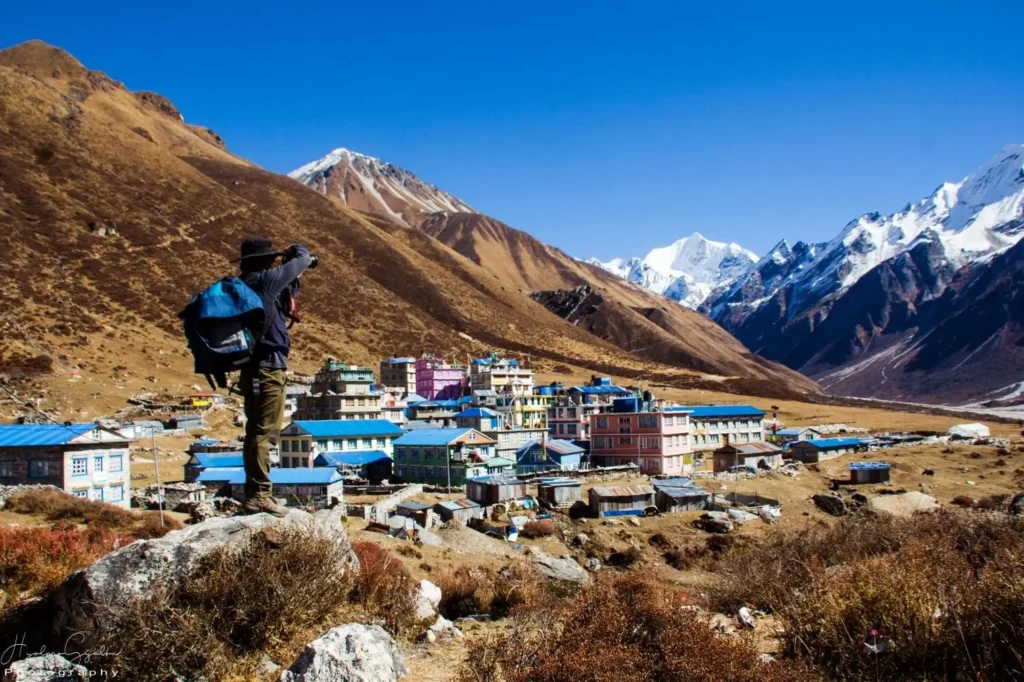 Conquering Mentok Kangri: A Climber’s Guide to Ladakh’s Crown Jewel - Mentok Kangri Climb Overview: Mentok Kangri, or simply "Mentok," is a majestic peak towering over Ladakh, India. Standing at a…
Conquering Mentok Kangri: A Climber’s Guide to Ladakh’s Crown Jewel - Mentok Kangri Climb Overview: Mentok Kangri, or simply "Mentok," is a majestic peak towering over Ladakh, India. Standing at a…  Experiencing the Climb of a Lifetime at Kang Yatse 2 - Kang Yatse 2 Climb Overview Kang Yatse 2 is an awe-inspiring mountain located in the Ladakh region of India. It…
Experiencing the Climb of a Lifetime at Kang Yatse 2 - Kang Yatse 2 Climb Overview Kang Yatse 2 is an awe-inspiring mountain located in the Ladakh region of India. It…  The Mountains Are Calling… Exploring Mountains and Beyond - Rediscovering my connection with the mountains - A journey into the unknown! It had been over 30 years since I…
The Mountains Are Calling… Exploring Mountains and Beyond - Rediscovering my connection with the mountains - A journey into the unknown! It had been over 30 years since I…  Camping Tips – 10 Tips to sleep better while camping - Camping is the answer, no matter what the question is! How to make your camping experience more comfortable and get…
Camping Tips – 10 Tips to sleep better while camping - Camping is the answer, no matter what the question is! How to make your camping experience more comfortable and get…

